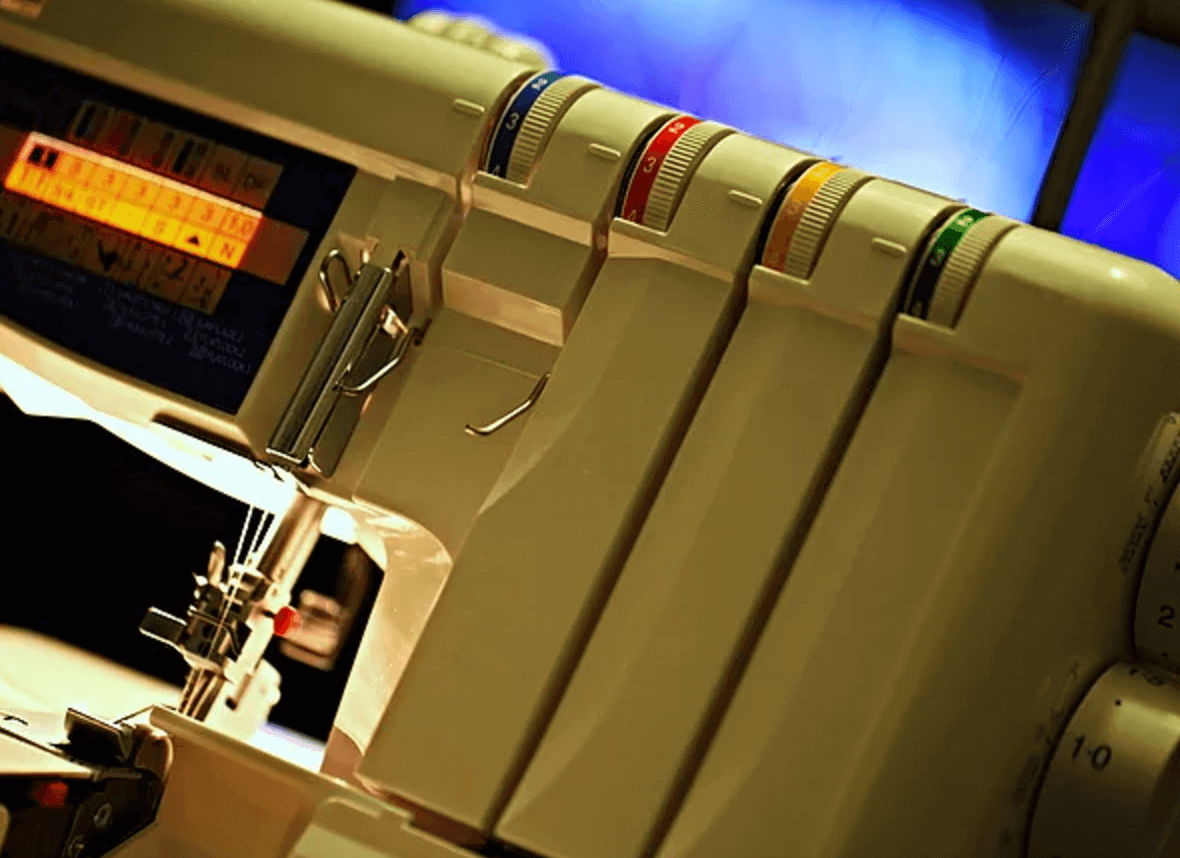
The Ironing Cloth, an essential accessory for perfect ironing
Ironing is a task that many people consider ordinary, even tedious. However, there’s a little secret known to dressmakers and lovers of delicate fabrics that transforms this chore into a real beauty treatment for your clothes: the ironing cloth.
This humble yet effective piece of cloth, placed between your iron and your textiles, becomes your best ally in avoiding disasters! From shiny or burnt fabrics to damaged fibers, these inconveniences are a thing of the past thanks to this little-known accessory.
Whether you’re handling silk, wool, or need to apply iron-on, the ironing cloth offers unrivalled protection, guaranteeing perfect ironing without the risk of damaging your precious fabrics.
In this article, we’ll tell you everything you need to know to use this tool optimally and preserve the quality of your fabrics on a daily basis.
Why use a ironing cloth?
Imagine this moment: you’ve spent hours sewing a delicate garment, or perhaps you’ve just brought out your favorite silk dress for a special event. You turn on your iron (or steam iron), ready to add the finishing touches for a flawless look. But suddenly, disaster strikes: an irreversible shiny mark appears on the fabric! This is where the ironing cloth comes in (preferably just beforehand), that discreet accessory that changes everything.
In a nutshell, a ironing cloth is a piece of damp cotton cloth used during ironing to protect delicate textiles from the direct heat of the iron. Placed between the iron and the fabric, it prevents burning and shining, and ensures gentler, fiber-saving ironing.
The ironing cloth is more than just a damp cloth; it’s a protective barrier between the intense heat of the iron and the sensitive fibers of your textiles. When you use it, it plays several crucial roles:
- Prevent shine and burns. Some fabrics, such as woollens and silks, are particularly sensitive to direct heat. The ironing cloth distributes this heat evenly, preventing shiny marks or, worse still, irreversible burns.
- Protection against limescale. You may not know it, but your iron can sometimes release small particles of limescale, especially if you use tap water. These deposits can mark your fabrics. The ironing cloth acts as a shield, preventing the limescale from reaching the surface of your clothes.
- Moisture retention. Ironing with a damp cloth ensures that your fabrics receive just the right amount of steam, without excess, for smooth, impeccable results without the risk of damaging fibers.
Using a ironing cloth means prolonging the life of your creations, while ensuring that each garment, each fabric, is treated with the care it deserves. Whether for a hand-sewn garment or a fragile everyday textile, this accessory becomes indispensable for those who want to achieve a perfect result without the slightest risk.

Which fabrics require a ironing cloth?
When it comes to ironing, not all fabrics are equal when it comes to heat. Some delicate fabrics can suffer irreversible damage if the heat is too intense or applied directly. The ironing cloth becomes your best ally in protecting these sensitive textiles. But what precisely are these fabrics that require special attention?
1. Silk
Synonymous with elegance and refinement, silk is an extremely delicate natural fiber. Exposed to direct heat, it can lose its luster, become brittle or even burn. By using a ironing cloth, you diffuse the heat evenly and avoid direct contact with the iron. This preserves the softness and shine of your silk pieces.
2. Wool and woollens
Wool garments, whether sweaters, suits or scarves, are sensitive to shining. This phenomenon leaves undesirable shiny marks on the fabric, resulting from excessive exposure to heat. ironing cloth acts as a protective barrier, preventing the iron from buffing the surface and preserving the wool’s natural, matte appearance.
3. Lace
Lace, with its fine, openwork structure, is particularly vulnerable. Direct heat can distort delicate patterns or break threads. By interposing a ironing cloth between the iron and the lace, you ensure gentle ironing, maintaining the integrity and beauty of the fabric.
4. Nylon and synthetic fibers
Synthetic fabrics such as nylon, polyester or acrylic are sensitive to high heat and can melt or warp. A moistened wiper reduces the effective temperature applied to the fabric, thus avoiding any risk of melting or damage.
5. Flannel
Appreciated for its softness and warmth, flannel can easily flatten or lose its fluffy texture under the iron. Using a ironing cloth preserves the fabric’s volume and softness, while effectively eliminating wrinkles.
6. Laminated and metallized fabrics
These fabrics, often used for eveningwear or suits, contain metallic threads that can react negatively to heat. A ironing cloth protects these sensitive elements, preventing both discoloration and deterioration of the metal fibers.
7. Fabrics with Prints or Delicate Patterns
For textiles adorned with screen prints, embroidery or painted motifs, direct heat can cause colors to fade or decorations to be damaged. The ironing cloth provides a layer of protection, ensuring that motifs remain vibrant and intact.
8. Certain Thermo-Tapes
When applying iron-on (fabrics with an adhesive side that sets when heated), we recommend using a ironing cloth. This prevents damage to the fusible or uneven melting of the adhesive. The ironing cloth allows heat to be spread more evenly. This ensures clean, long-lasting fusing, while protecting the iron from adhesive residues.

How to choose and use a ironing cloth?
Choosing and using a ironing cloth correctly is essential to getting the most out of this essential accessory. Although it’s just a piece of fabric, not all are created equal, and it’s important to know how to use it to protect your clothes to the full.
1. How to choose a ironing cloth?
Your choice of ironing board depends on the type of fabric you frequently iron. Here are some popular options and their advantages:
- Fine cotton: This is the most common and versatile choice. A piece of thin cotton, like an old sheet or tea towel, works perfectly for most fabrics. It’s transparent, so you can see what you’re doing without removing the ironing cloth.
- Terry cloth. This type of terry cloth is particularly useful for raised fabrics such as velvet, whose fibers flatten easily. Terry cloth absorbs excess moisture while keeping the fabric’s texture intact.
- Silk organza. This very fine fabric is ideal for delicate fabrics such as silk or woollens. Thanks to its transparency, it lets you keep an eye on the details you’re ironing, such as seams and borders.
- Wool flannel. Used for thicker fabrics, flannel is particularly well-suited to protecting wool fibers from crushing or shining under the direct heat of the iron.
- Synthetic ironing cloth or ironing nets. In addition to natural fabrics, there are synthetic ironing cloth, often referred to as ironing nets. Made from heat-resistant materials, they offer excellent protection against burning and polishing, while still allowing steam to pass through. Their thin, transparent surface lets you see the fabric underneath. This makes them ideal for small details and delicate fabrics.
The golden rule is simple: choose a natural, undyed fabric that can withstand high temperatures!
2. How to use a ironing cloth correctly
Now that you’ve chosen the ideal ironing cloth, let’s take a look at how to use it to achieve perfect results:
- Moisten the ironing cloth. Soak it in clean water before each use. Then wring it out well so that it’s just damp and not dripping.
- Place it on the fabric. Lay the garment or textile you wish to iron on the ironing board. Then place the damp cloth directly on the fabric. Make sure it covers the entire surface you’re going to iron.
- Set the right temperature. Set the temperature of your iron according to the type of fabric you’re handling. It’s best to always follow the fabric or garment care recommendations.
- Iron with gentle strokes. Gently pass the iron over the damp cloth, without pressing too hard or leaving it immobile for too long. The moist heat spreads evenly, protecting your fabrics while ironing them efficiently.
- Allow to cool. After ironing, wait a few seconds before touching or moving the fabric. It may wrinkle easily while still warm and damp.
The ironing cloth is a simple but essential accessory for preserving the quality of your fabrics and achieving perfect ironing without risk. By choosing and using this tool correctly, you can ensure the longevity and brilliance of your most delicate textile creations.


